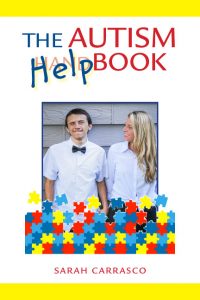
Approximately 90% of parents of children with autism report that their child has wandered from home, school or daycare at least one time. Sadly, the leading cause of death for people with autism is wandering, of those deaths, 90% of children drown.
Children with autism often lack safety awareness skills and are, unfortunately, drawn to water. As a mother of a child with autism and an advocate for people on the autism spectrum, I have mentored hundreds of families and have worked with police departments on autism and wandering.
What I have learned over the years is that parents simply need resources to address this behavior and police departments need guidance as to how to locate children with autism in the event they have wandered.
 To address the safety needs of people with autism, their caregivers (most often parents) and police departments, I have put together a handbook on autism titled, The Autism Helpbook. This book contains chapters on self-care, adolescence, education, legal matters, insurance, life with autism and includes a section on wandering.
To address the safety needs of people with autism, their caregivers (most often parents) and police departments, I have put together a handbook on autism titled, The Autism Helpbook. This book contains chapters on self-care, adolescence, education, legal matters, insurance, life with autism and includes a section on wandering.
The section dedicated to wandering prevention includes information on GPS tracking devices, where to buy them, cost and practicality. This section also discusses the importance of behavior therapy in regard to wandering and creating a wandering plan for home and school if a child were to leave his or her caregivers.
This section also includes information for police departments; in short, police officers have the best chance of locating a child with autism by locating the closest bodies of water to the child’s last known location and dispatching officers accordingly.
Although children with autism often lack safety awareness, there are steps that can be taken to help prevent wandering and steps to be taken to help locate a child if they have wandered. As a mom and as an advocate for people on the autism spectrum, I see a great need for resources and for adequate planning pertaining to wandering.
There is hope for a high quality of life for people with autism and their families and, like all journeys, success starts with the first step. It is my hope that this book helps those in need of resources to have a place to start and a solid plan to address the safety needs of our precious children.















